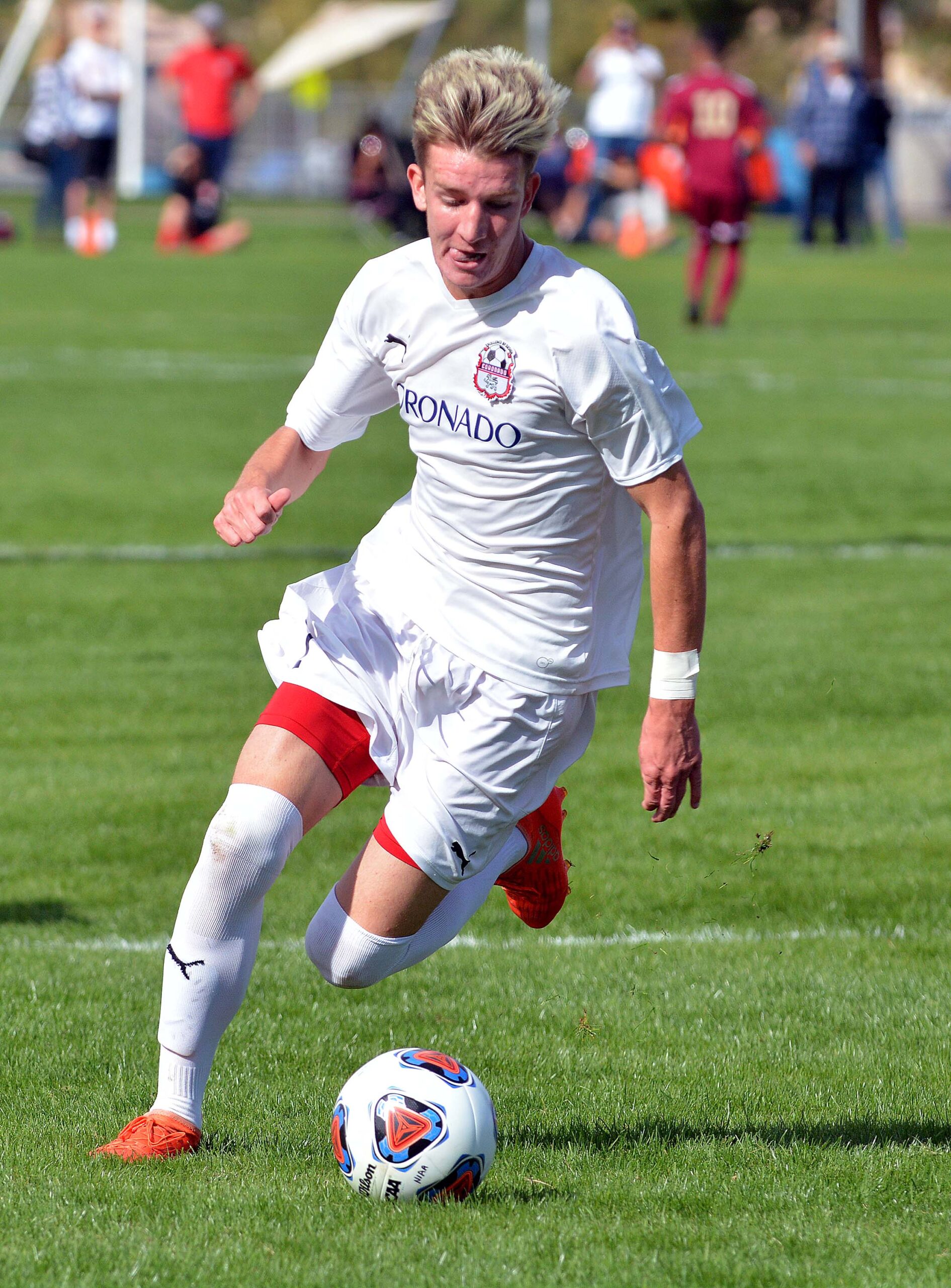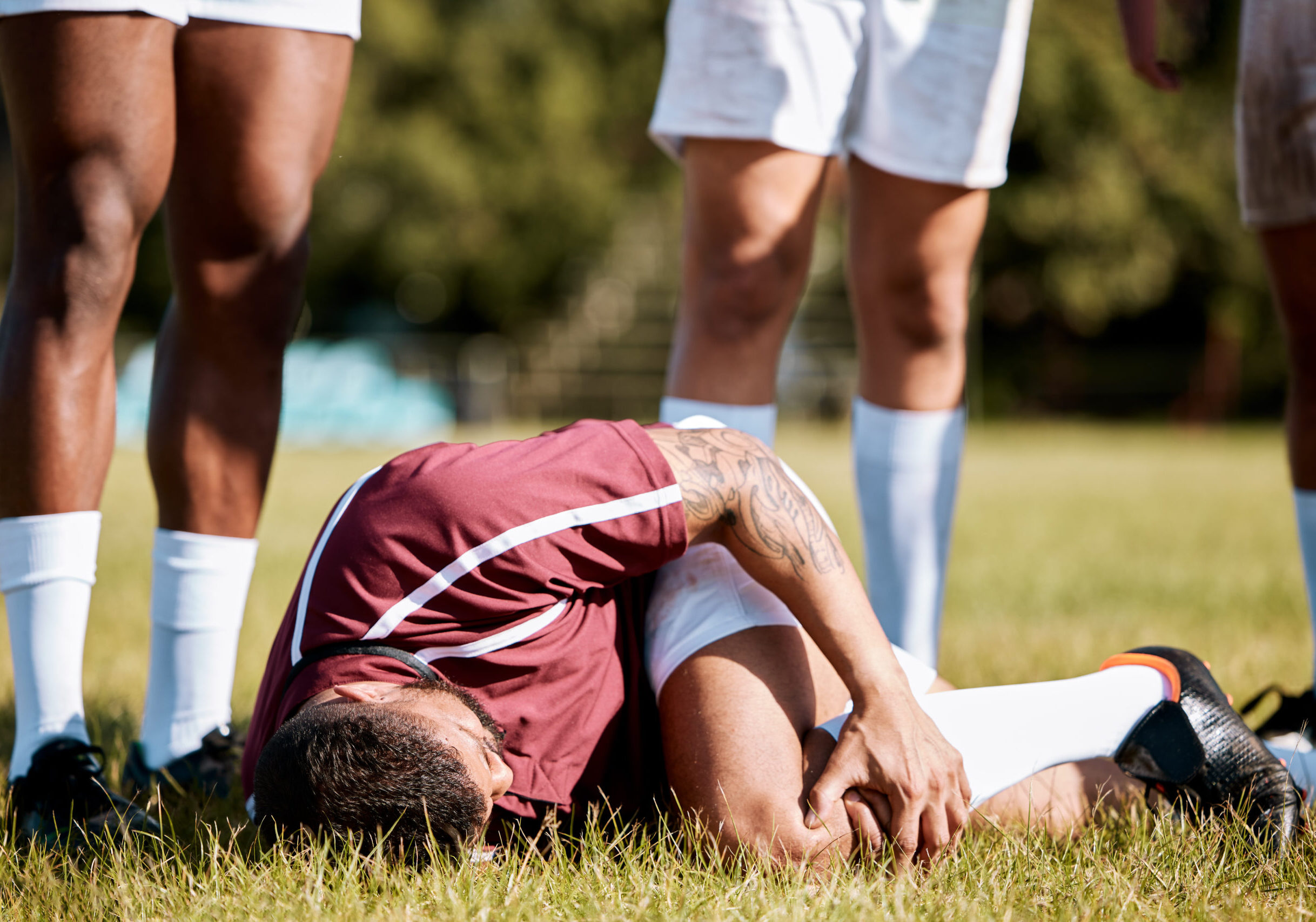The Role of Plyometric Training in Enhancing Youth Athlete Development in Football
/
The Role of Plyometric Training in Enhancing Youth Athlete Development in Football

Resistance training is an important part of athletic development, aiming to enhance players’ sport-specific performance by improving key physical abilities such as strength, power and speed (Silva et al., 2015). For youth athletes, resistance training is not only essential for athletic development but also for long-term health benefits as improved motor skills, strength, and injury prevention (Faigenbaum et al., 2009; Lloyd et al., 2014). However, children are not “mini adults” and show different physiological responses to training due to ongoing growth, maturation, and neuromuscular development (Lloyd et al., 2014). The responses of youth athletes to resistance training are mainly neural rather than hypertrophic, as their hormone levels are lower than those of adults (Faigenbaum et al., 2009).
Plyometric exercises are a popular form of resistance training because they emphasize explosive movements that closely mimic the physical demands of football (Beato et al., 2018; Bedoya et al., 2015). Research has shown that plyometric training can improve sprint performance, agility and vertical jump height in adult football players (Booth & Orr, 2016; Slimani et al., 2016). However, it is still unknown to what extent these benefits apply to young athletes. The purpose of this review is to evaluate the effects of plyometric training on the performance of young football players and provide practical recommendations for its application.

Children naturally perform different kinds of plyometric actions in daily life, such as jumping, skipping, and hopping on playgrounds (Faigenbaum et al., 2009). Plyometric training consists of bodyweight jumping, skipping, and hopping exercises that involve the stretch-shortening cycle (SSC). There is a rapid eccentric loading immediately followed by a rapid concentric contraction to produce maximal force in the shortest amount of time by improving the function of the neural and musculotendinous systems. Energy is stored during the eccentric phase and will be released during the concentric contraction (Booth & Orr, 2016; Lloyd et al., 2011; Markovic & Mikulic, 2010). This mechanism increases force, power, and efficiency, resulting in more force production than concentric muscle action alone can deliver (Myers et al., 2017; Turner & Comfort, 2017).
Neural adaptations, instead of morphological changes, are the primary physiological response to plyometric training in youth athletes (Faigenbaum et al., 2009; Lloyd et al., 2011; McKinlay et al., 2018). Improved coordination, increased recruitment of motor units (especially type 2 motor units), and more effective activation of muscles involved in specific tasks are all examples of neural adaptations (Bedoya et al., 2015; Legerlotz et al., 2016; McKinlay et al., 2018). Without adequate levels of testosterone to promote hypertrophy, morphological adaptations are minimal for pre pubertal children (Faigenbaum et al., 2009). Furthermore, especially in early pubertal children, bone adaptations are significant, leading to improvements in bone mass, structure, and strength (Markovic & Mikulic, 2010).
The practical benefits are well recognized, despite the limited studies on the physiological adaptations of plyometric training in youth athletes. Plyometric training has been shown to enhance athletic performance of young football players and lower the risk of injury (Bedoya et al., 2015). A major advantage of plyometric training is power development, especially for players participating in high impact sports like football (Bedoya et al., 2015; Kons et al., 2023). Football players who have more power are better able to perform explosive actions like sprinting, jumping and changes of directions, all of which lead to improved football performance (Bedoya et al., 2015; Kons et al., 2023).

Plyometric training has been shown to significantly improve sprint performance over a range of distances, from 5 to 30 meters. Among prepubertal and pubertal youth football players, mean relative improvements of 2.8% to 7.5% have been found (Bedoya et al., 2015; Ramirez-Campillo et al., 2020). The rate of improvement can be influenced by the type of plyometric exercises. Horizontal plyometric jumps, which focus on horizontal ground reaction forces and longer ground contact times are especially beneficial for shorter sprints (e.g., 5 m). This means that there is more time to generate force during the push-off, which increases impulse and acceleration (Ramirez-Campillo et al., 2020). However, to improve top-speed sprinting, vertical plyometric exercises with faster ground contact times and a higher rate of force development might be more beneficial. The demands of both the acceleration and top speed sprinting are best met by combining horizontal and vertical plyometric exercises to optimize sprint performance (Ramirez-Campillo et al., 2020).
Plyometric training has been shown to significantly improve agility performance in different tests among youth football players in different maturational stages. (Meylan & Malatesta, 2009; Michailidis et al., 2013; Thomas et al., 2009). Compared to sprinting, agility places greater emphasis on deceleration and subsequent reactive coupling with acceleration, compared to sprinting and mirrors the dynamic movement patterns observed in football (Michailidis et al., 2013; Thomas et al., 2009). Increased lower limb muscle power and reactive strength, which can be developed through plyometric training have been linked to improvements in agility. Michailidis et al. (2013) used lateral movements in their plyometric training, which may enhance eccentric strength in the leg extensors, an essential factor for directional changes during deceleration.
A meta-analysis by Ramirez-Campillo et al. (2020) showed that plyometric training can improve jump performance, with an average increase of 8.6% in countermovement jump height. Increased muscle power, neuromuscular efficiency, and improved SSC utilisation are often associated with these improvements (Michailidis et al., 2013). These adaptations contribute to increased explosive strength and better coordination during take-off and landing phases, which are critical for achieving higher or longer jumps (Ramirez-Campillo et al., 2020). Surprisingly, vertically orientated performance measures like the countermovement jump and squat jump height did not improve more with longer plyometric training programs (>7 weeks, >14 sessions) compared to shorter programs. This might suggest that vertical performance improvements occur quickly, while sport-specific horizontal improvements take more time (Ramirez-Campillo et al., 2020).
Kicking for distance tests showed significant improvements after plyometric training, with increases of 22.5% and 27% in the studies by Michailidis et al. (2013) and Rubley et al. (2011). Increased strength and power in the leg extensor muscles are likely the primary reasons for these improvements. Whereas Michailidis et al. (2013) examined 10-year-old boys, Rubley et al. (2011) investigated 13-year-old girls. These results suggest that plyometric training can help prepubertal and pubertal youth football players improve their kicking distance.

Plyometric training enhances athletic performance in young football players and also contributes to injury prevention, with a relative risk reduction of 0.45 compared to programs that exclude these exercises (Rössler et al., 2014). Most injuries occur during high-impact situations, such as landing, directional changes, or opponent contact. By focusing on high-intensity exercises like plyometric training, the neuromuscular system becomes better prepared to manage these forces which can reduce injury risk (Michailidis et al., 2013; Rössler et al., 2014)
Furthermore, Ramirez-Campillo et al. (2020) showed no intervention-related injuries, confirming the safety of plyometric exercises for young athletes. However, plyometric training should be used with caution for athletes who are not in good physical condition, have low strength levels, and struggle to decelerate their body mass during landing activities (Ramirez-Campillo et al., 2020). When using plyometric training, the safety of youth football players should come first. To ensure minimal risk of injury and efficient movement patterns, instructors must be well trained in teaching the right techniques (Bedoya et al., 2015). Since plyometric training uses movements similar to those in children’s normal play activities, there is no minimum strength level required to start (Meylan & Malatesta, 2009). Longer training programs (>7 weeks) have been shown to lead to significantly larger improvements, as the longer adaptation process helps to manage progressive overload more effectively over time (Ramirez-Campillo et al., 2020).
A structured way of progression should be followed to guarantee continuous improvement, gradually increasing training intensity, volume, or technical refinement. Begin with low-intensity movements (e.g., skipping, low-height jumps) and progress to higher-intensity plyometric exercises, like bounding and depth jumps (Bedoya et al., 2015; Faigenbaum et al., 2009; Lloyd et al., 2011). Plyometric training for youth athletes should be performed two times a week on non-consecutive days to avoid excessive overload (Bedoya et al., 2015; Lloyd et al., 2011). Increasing the amount of jumps by around 10% every week can result in a volume-based overload (Faigenbaum et al., 2009; Lloyd et al., 2011). Prioritizing movement quality over overload is important for optimal development and safety (Faigenbaum et al., 2009; Lloyd et al., 2011). Underestimating a child’s ability and starting with lower intensity and/or volume is better than overexposing them to training and increasing the risk of injuries (Lloyd et al., 2011).
In conclusion, plyometric training improves physical performance and reduces injury risk in youth football players at all maturational stages by increasing sprint velocity, agility, jump performance, kicking distance, and reactive strength. To make sure safety and effectiveness are prioritized, plyometric programs for youth football players should focus on proper technique, gradual progression, and movement quality over intensity or volume. Programs should start with low-intensity exercises, progressing to higher-intensity movements as coordination and strength improve. For young football players, this can enhance development and promote long-term success.
Practical implications:
The following recommendations will help to maximize the benefits of plyometric training while keeping it safe and effective for youth football players:
- Plyometric training should be instructed by trained professionals who are able to teach proper techniques and ensure safety.
- Choose plyometric exercises that include both horizontal and vertical movements to meet the demands of football.
- Implement progressive overload by gradually increasing the intensity, volume, or complexity of plyometric exercises over time. Train twice a week on non-consecutive days and have 50-to-150-foot contacts per session.
- Prioritise quality over quantity of the movement to ensure safe and effective training.
- Adjust plyometric programs based on the athlete’s age, maturation stage, and training history to match their developmental needs and physical readiness.
References:
Askling, C. M., Malliaropoulos, N., & Karlsson, J. (2012). High-speed running type or stretching-type of hamstring injuries makes a difference to treatment and prognosis. British Journal of Sports Medicine, 46(2), 86–87. https://doi.org/10.1136/bjsports-2011-090534
Barnes, C., Archer, D., Hogg, B., Bush, M., & Bradley, P. (2014). The Evolution of Physical and Technical Performance Parameters in the English Premier League. International Journal of Sports Medicine, 35(13), 1095–1100. https://doi.org/10.1055/s-0034-1375695
Bramah, C., Mendiguchia, J., Dos’Santos, T., & Morin, J.-B. (2024). Exploring the Role of Sprint Biomechanics in Hamstring Strain Injuries: A Current Opinion on Existing Concepts and Evidence. Sports Medicine, 54(4), 783–793. https://doi.org/10.1007/s40279-023-01925-x
Buckthorpe, M., Wright, S., Bruce-Low, S., Nanni, G., Sturdy, T., Gross, A. S., Bowen, L., Styles, B., Della Villa, S., Davison, M., & Gimpel, M. (2019). Recommendations for hamstring injury prevention in elite football: Translating research into practice. British Journal of Sports Medicine, 53(7), 449–456. https://doi.org/10.1136/bjsports-2018-099616
Danielsson, A., Horvath, A., Senorski, C., Alentorn-Geli, E., Garrett, W. E., Cugat, R., Samuelsson, K., & Hamrin Senorski, E. (2020). The mechanism of hamstring injuries – a systematic review. BMC Musculoskeletal Disorders, 21(1), 641. https://doi.org/10.1186/s12891-020-03658-8
Dello Iacono, A., McLaren, S. J., Macpherson, T. W., Beato, M., Weston, M., Unnithan, V. B., & Shushan, T. (2023). Quantifying Exposure and Intra-Individual Reliability of High-Speed and Sprint Running During Sided-Games Training in Soccer Players: A Systematic Review and Meta-analysis. Sports Medicine, 53(2), 371–413. https://doi.org/10.1007/s40279-022-01773-1
Di Salvo, V., Baron, R., Tschan, H., Calderon Montero, F., Bachl, N., & Pigozzi, F. (2007). Performance Characteristics According to Playing Position in Elite Soccer. International Journal of Sports Medicine, 28(3), 222–227. https://doi.org/10.1055/s-2006-924294
Duhig, S., Shield, A. J., Opar, D., Gabbett, T. J., Ferguson, C., & Williams, M. (2016). Effect of high-speed running on hamstring strain injury risk. British Journal of Sports Medicine, 50(24), 1536–1540. https://doi.org/10.1136/bjsports-2015-095679
Ekstrand, J., Bengtsson, H., Waldén, M., Davison, M., Khan, K. M., & Hägglund, M. (2023). Hamstring injury rates have increased during recent seasons and now constitute 24% of all injuries in men’s professional football: The UEFA Elite Club Injury Study from 2001/02 to 2021/22. British Journal of Sports Medicine, 57(5), 292–298. https://doi.org/10.1136/bjsports-2021-105407
Gabbett, T. J. (2016). The training—injury prevention paradox: Should athletes be training smarter and harder? British Journal of Sports Medicine, 50(5), 273–280. https://doi.org/10.1136/bjsports-2015-095788
Green, B., Bourne, M. N., Van Dyk, N., & Pizzari, T. (2020). Recalibrating the risk of hamstring strain injury (HSI): A 2020 systematic review and meta-analysis of risk factors for index and recurrent hamstring strain injury in sport. British Journal of Sports Medicine, 54(18), 1081–1088. https://doi.org/10.1136/bjsports-2019-100983
Haralabidis, N., Colyer, S. L., Serrancolí, G., Salo, A. I. T., & Cazzola, D. (2022). Modifications to the net knee moments lead to the greatest improvements in accelerative sprinting performance: A predictive simulation study. Scientific Reports, 12(1), 15908. https://doi.org/10.1038/s41598-022-20023-y
Malone, S., Owen, A., Mendes, B., Hughes, B., Collins, K., & Gabbett, T. J. (2018). High-speed running and sprinting as an injury risk factor in soccer: Can well-developed physical qualities reduce the risk? Journal of Science and Medicine in Sport, 21(3), 257–262. https://doi.org/10.1016/j.jsams.2017.05.016
Mendiguchia, J., Castaño-Zambudio, A., Jiménez-Reyes, P., Morin, J., Edouard, P., Conceição, F., Tawiah-Dodoo, J., & Colyer, S. L. (2022). Can We Modify Maximal Speed Running Posture? Implications for Performance and Hamstring Injury Management. International Journal of Sports Physiology and Performance, 17(3), 374–383. https://doi.org/10.1123/ijspp.2021-0107
Petersen, J., Thorborg, K., Nielsen, M. B., Budtz-Jørgensen, E., & Hölmich, P. (2011). Preventive Effect of Eccentric Training on Acute Hamstring Injuries in Men’s Soccer: A Cluster-Randomized Controlled Trial. The American Journal of Sports Medicine, 39(11), 2296–2303. https://doi.org/10.1177/0363546511419277
Stølen, T., Chamari, K., Castagna, C., & Wisløff, U. (2005). Physiology of Soccer: An Update. Sports Medicine, 35(6), 501–536. https://doi.org/10.2165/00007256-200535060-00004
Timmins, R. G., Bourne, M. N., Shield, A. J., Williams, M. D., Lorenzen, C., & Opar, D. A. (2016). Short biceps femoris fascicles and eccentric knee flexor weakness increase the risk of hamstring injury in elite football (soccer): A prospective cohort study. British Journal of Sports Medicine, 50(24), 1524–1535. https://doi.org/10.1136/bjsports-2015-095362
Contact Information
Have questions or need expert guidance? Get in touch and let’s work together to elevate your performance!
Contact
- (+31) 6 138 569 83
- info@timvanhoorn.blog
- Groningen, The Netherlands
© 2025 Tim van Hoorn • All Rights Reserved

